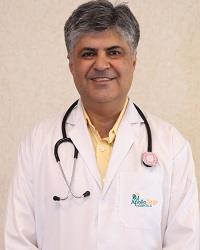Search Result: 5

Dr Dipjyoti Payeng
MBBS, MD, DNB (Neurology)
Registration No
6223197
Language
English, हिंदी

8 years experience overall

Paschim Boragaon , Guwahati
MON- SAT, MON- SAT(03:00 PM-05:00 PM)

Dr Lakshya Jyoti Basumatary
MBBS, MD, DM (Neurology)
Registration No
4329095
Language
English

22 years experience overall

Paschim Boragaon , Guwahati
MON- SAT, MON- SAT(11:30 AM-04:30 PM)

Dr Neelav Sarma
MD,DM
Registration No
3400642
Language
English, অসমিয়া, हिंदी

7 years experience overall

Guwahati , Guwahati
MON- SAT | MON, WED, THU(11:30 AM-01:30 PM | 04:00 PM-05:30 PM)

Dr Radhika Ranjan Das
MD,DM
Registration No
2020494
Language
English

27 years experience overall

Guwahati , Guwahati
MON- SAT(10:00 AM-01:00 PM)

Dr Satish Bawri
MBBS:MD(Medicine);DM(Neurology)
Registration No
1809856
Language
English, অসমিয়া, বাংলা, हिंदी

7 years experience overall

Guwahati , Guwahati
MON- SAT(11:00 AM-01:00 PM)
Frequently Asked Questions for Craniotomy in Guwahati
A craniotomy may result in temporary memory loss or trouble concentrating and focusing in rare situations. These cognitive changes are typically temporary and improve over time as the brain heals. In rare cases, long-term memory loss or other cognitive deficits may occur.
A decompressive craniectomy is a surgical technique that permanently removes a considerable piece of the skull to relieve pressure on the brain due to bleeding or swelling. It is usually performed in emergencies to prevent further damage to the brain.
Long-term craniotomy side effects can vary based on factors such as the location of the surgery and the underlying ailment being treated.
Like any surgical procedure, craniotomy carries some risks and complications. These may include infection, bleeding, blood clot formation, damage to surrounding structures, seizures, and changes in brain function. The neurosurgeon takes precautions to minimise these risks.
A craniotomy involves temporarily removing a part of the skull to access and treat the brain, while in a craniectomy, a larger portion of the skull is permanently removed. Craniectomy is usually done in cases where there is significant brain swelling or when it is necessary to relieve pressure on the brain.
The neurosurgeon determines craniotomy eligibility based on a thorough review of the patient’s medical history, physical examination, and diagnostic tests. Factors such as the patient’s overall health and the potential benefits of the surgery are taken into consideration.
The risk of stroke after a craniotomy is relatively low. However, in some cases, there may be a small risk of stroke due to factors such as blood clot formation or damage to blood vessels during the procedure. The neurosurgeon takes precautions to minimise these risks.
After a craniotomy, patients are closely monitored in the hospital for a few days. They may require pain medication, antibiotics to prevent infection, and physical therapy to regain strength. The doctor will provide specific instructions on wound care, activity restrictions, and follow-up appointments.
The duration of a craniotomy procedure depends on various factors, including the complexity of the surgery and the underlying condition being treated. On average, a craniotomy can take anywhere between 2 to 6 hours.
The recovery time for craniotomy varies depending on the patient’s age, overall health, and the complexity of the surgery. Generally, it may take several weeks to months to fully recover and resume normal activities.
Before undergoing a craniotomy, patients may need to undergo pre-operative tests such as blood work, imaging scans, and consultations with other specialists. The doctor will provide specific instructions regarding fasting and any medications that need to be stopped before the procedure.
There are different types of craniotomy procedures, such as traditional craniotomy, keyhole craniotomy (minimally invasive), and endoscopic craniotomy. The specific type of craniotomy used depends on the patient’s condition and the goal of the surgery.
The success rate of craniotomy depends on various factors, including the underlying condition being treated. In general, craniotomy has a high success rate for relieving symptoms, removing tumours, and improving overall quality of life.
A craniotomy is performed by a neurosurgeon, who is a specialist trained in surgical procedures involving the brain, spine, and nervous system.
Related Procedures in Guwahati
Related Treatments in Guwahati
- Doctors for Alzheimers Disease Treatment in Guwahati
- Doctors for Amyotrophic Lateral Sclerosis Treatment in Guwahati
- Doctors for Aneurysms Treatment in Guwahati
- Doctors for Aphasia Treatment in Guwahati
- Doctors for Bells Palsy Treatment in Guwahati
- Doctors for Benign Essential Blepharospasm Treatment in Guwahati
- Doctors for Dementia Treatment in Guwahati
- Doctors for Encephalopathy Treatment in Guwahati
- Doctors for Epilepsy Treatment in Guwahati
- Doctors for Erectile Dysfunction Treatment in Guwahati
- Doctors for Headache Treatment in Guwahati
- Doctors for Huntingtons Disease Treatment in Guwahati
- Doctors for Hydrocephalus Treatment in Guwahati
- Doctors for Hyperhidrosis Treatment in Guwahati
- Doctors for Mild cognitive impairment Treatment in Guwahati
- Doctors for Myasthenia Gravis Treatment in Guwahati
- Doctors for Narcolepsy Treatment in Guwahati
- Doctors for Nystagmus Treatment in Guwahati
- Doctors for Obstructive Sleep Apnea Treatment in Guwahati
- Doctors for Orthostatic Hypotension Treatment in Guwahati
- Doctors for Parkinsons Disease Treatment in Guwahati
- Doctors for Peripheral Neuropathy Treatment in Guwahati
- Doctors for Radiculopathy Treatment in Guwahati
- Doctors for Restless Legs Syndrome Treatment in Guwahati
- Doctors for Sarcoidosis Treatment in Guwahati
- Doctors for Sciatica Treatment in Guwahati
- Doctors for Spasticity Treatment in Guwahati
- Doctors for Stroke Treatment in Guwahati
- Doctors for Transient Ischemic Attack Treatment in Guwahati
- Doctors for Tourette Syndrome Treatment in Guwahati
- Doctors for Tremor Treatment in Guwahati
- Doctors for Trigeminal Neuralgia Treatment in Guwahati
- Doctors for Vertigo Treatment in Guwahati
Other Specialities in Guwahati
- Best Urologist in Guwahati
- Best Pulmonologist in Guwahati
- Best General Physician in Guwahati
- Best Endocrinologist in Guwahati
- Best Cardiologist in Guwahati
- Best Oncologist in Guwahati
- Best Radiologist in Guwahati
- Best Orthopedics in Guwahati
- Best Hepatologist in Guwahati
- Best Gynecologist in Guwahati
- Best Dermatologist in Guwahati
- Best Gastroenterologist in Guwahati
- Best Psychologist in Guwahati
- Best Ent Specialist in Guwahati
- Best Nephrologist in Guwahati
- Best Rheumatologist in Guwahati
- Best Diabetologist in Guwahati
- Best Psychiatrist in Guwahati
- Best Neonatologist in Guwahati
- Best Dentist in Guwahati
- Best Dietitian in Guwahati
- Best Haematologist in Guwahati
- Best Pediatrics in Guwahati
- Best General Surgeon in Guwahati
Top Hospitals in India
- Hospitals in Ahmedabad
- Hospitals in Bangalore
- Hospitals in Bhubaneswar
- Hospitals in Bilaspur
- Hospitals in Chennai
- Hospitals in Delhi
- Hospitals in Guwahati
- Hospitals in Hyderabad
- Hospitals in Indore
- Hospitals in Kolkata
- Hospitals in Madurai
- Hospitals in Mumbai
- Hospitals in Mysore
- Hospitals in Nashik
- Hospitals in Noida
- Hospitals in Visakhapatnam
- Hospitals in Lucknow
- Hospitals in Bhopal
- Hospitals in Karur
- Hospitals in Kochi
- Hospitals in Nellore
- Hospitals in Trichy
- Hospitals in Kakinada
© Copyright 2024. Apollo Hospitals Group. All Rights Reserved.




 Call Now
Call Now





